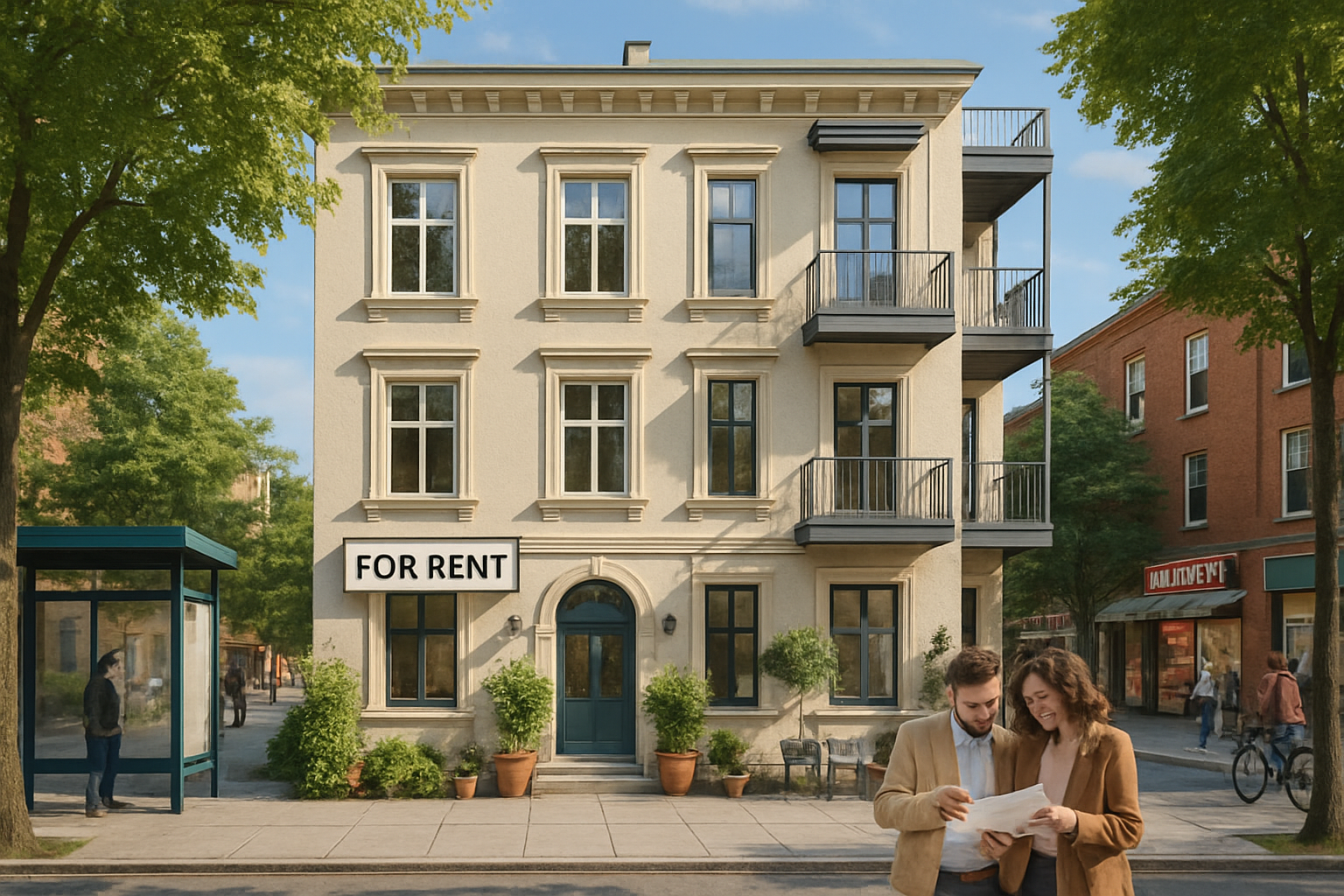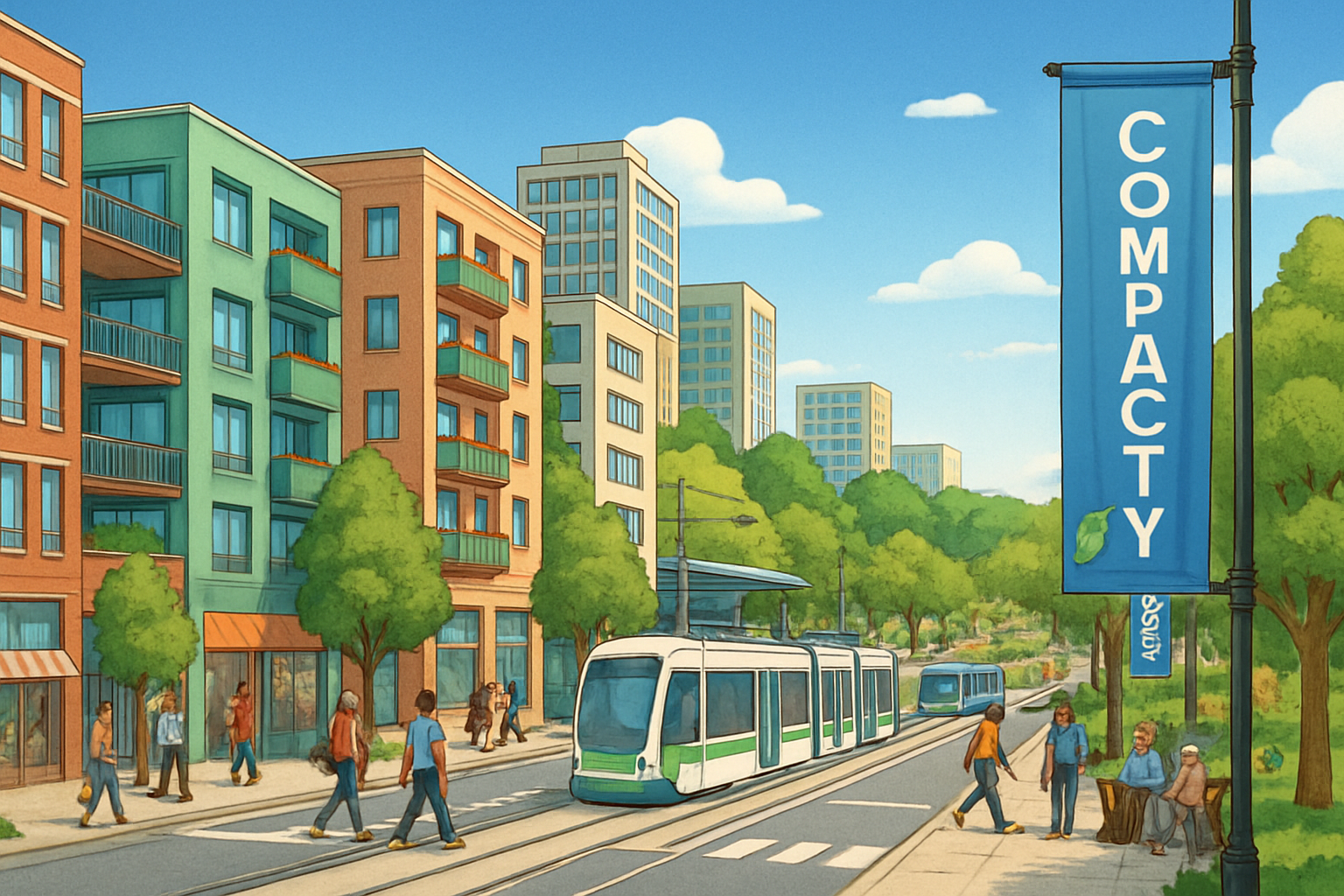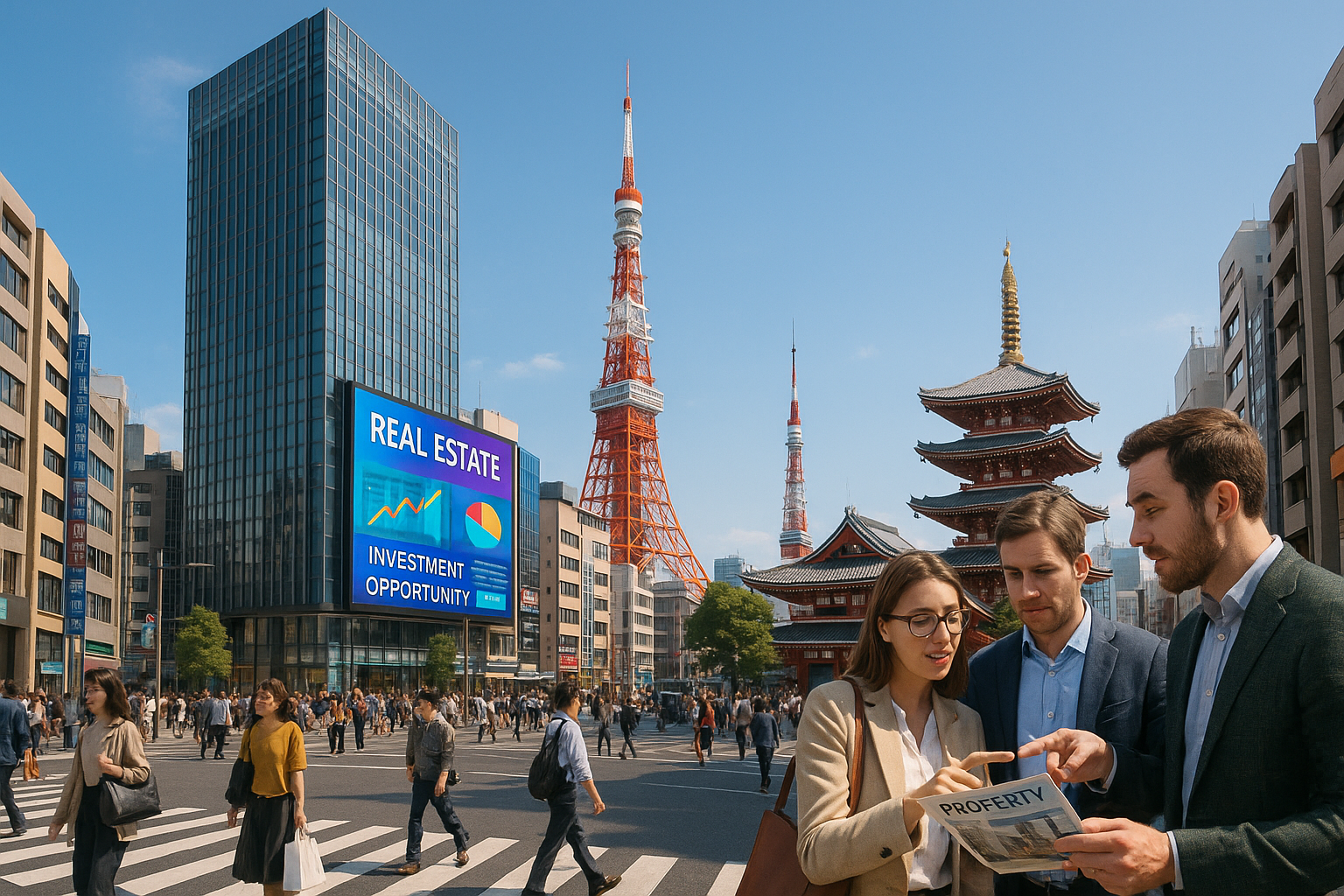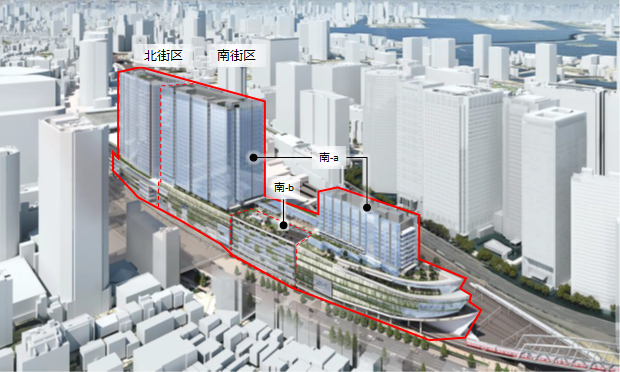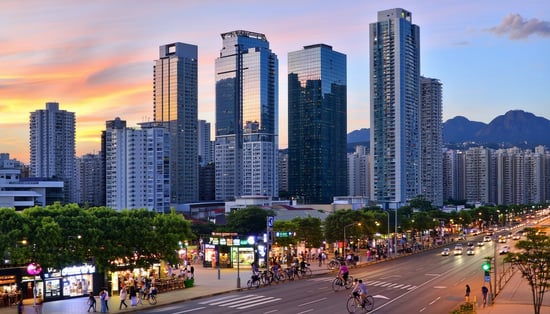Rapid advances in automated driving technology are fundamentally changing the way we live our lives, and the impact on the real estate market in particular is immeasurable. The impact on the real estate market in particular is immeasurable, and as INA & Associates, we are asked daily by our clients, "What will happen to real estate prices when automated driving becomes widespread?
This technological innovation is not merely a change in the means of transportation, but is forcing a fundamental redefinition of real estate values. A shift from the traditional value standard of "proximity to train stations" to new value axes such as "quality of mobility" and "effective use of time" has begun.
In this article, we will explain in detail the specific impact of automated driving technology on the real estate market, taking into account the latest data and market trends. This information is essential for those who are considering investing in real estate or purchasing a home in the future.
Five Key Impacts of Automated Technology on the Real Estate Market
1. Accelerated value appreciation of suburban real estate
The widespread adoption of automated driving technology is expected to significantly increase suburban real estate values. Suburban areas, which used to be bottlenecked by long commute times, are attracting attention as residential areas with new attractions.
Qualitative Change in Commuting Time
The greatest benefit of automated vehicles is the effective use of travel time. Commuting time, which used to require the concentration required by conventional driving, is transformed into time for work, reading, and rest. This change has made the two-hour one-way commute less painful, increasing demand for spacious homes in the suburbs.
According to a study by the Ministry of Land, Infrastructure, Transport and Tourism, the spread of automated driving technology could lead to rising land prices in the suburbs by 2030. This prediction reflects a change in values regarding commuting time.
Specific Benefits of Suburban Real Estate
| Item | Urban Area | Suburban Area |
|---|---|---|
| Residential area | 70㎡ (average) | 120㎡ (average) |
| Price range | 80 million yen~ | 45 million yen~ |
| Parking space | From 30,000 yen/month | Free~ 5,000 yen/month |
| Natural environment | Limited | Abundant |
| Child-rearing environment | Limited | Abundant |
As this table shows, the overwhelming cost performance of suburban areas will stand out if the burden of commuting is reduced by automatic driving technology.
2. The standard of value for properties near train stations will fundamentally change.
In conventional real estate investment, "near station" was the absolute standard of value. However, with the spread of automated driving technology, this standard of value is changing drastically.
A paradigm shift from "proximity to stations" to "ease of mobility
Until now, real estate value was determined by distance from a station. Properties within a 3-minute walk from a station were valued higher than standard condominiums, and property values tended to drop dramatically when walking distances exceeded 10 minutes.
However, if automated vehicles become widespread, the criteria for determining property values may shift to "ease of travel" rather than "proximity to a station. Specifically, the following factors will become important
| New Value Criteria | Importance | Description |
|---|---|---|
| Facilities for automated vehicles | ★★★★★ | Availability of charging facilities and dedicated parking |
| Road access | ★★★★☆ | Connectivity to main roads |
| Degree of IoT compatibility | ★★★☆☆ | Connectivity with smart home features |
| Surrounding environment | ★★★★☆ | Access to commercial and medical facilities |
| Disaster preparedness | ★ ★ ★ ★ ★ ★ ★ ★ ★ ★ ★ ★ ★ ★ ★ ★ ★ ★ ★ ★ ★ ★ ★ ★ ★ ★ ★ ★ ★ | Secured means of transportation in case of emergency |
Investment strategy needs to be reviewed
We recommend that real estate investors review their investment strategies, which have traditionally focused on "station proximity. In the future, it will be important to select properties based on new value criteria in anticipation of the spread of automated vehicles.
Particular attention should be paid to properties along major roads. Until now, they have tended to be avoided due to noise and exhaust emission problems, but these problems will be greatly reduced if electric vehicles become the mainstream due to the spread of self-driving cars.
3. Sharp decline in demand for parking lots and a major shift in land use
It is predicted that the spread of self-driving cars will drastically reduce the demand for parking spaces. This shift will bring revolutionary changes in urban land use.
Advancement of the Sharing Economy
The spread of automated vehicle sharing services will reduce the need for individuals to own cars.
Examples of Former Parking Lot Land Utilization
| Diversion Destination | Area efficiency | Profitability | Social Value |
|---|---|---|---|
| Parks and green spaces | Parks and green spaces | ★☆☆☆☆ | ★★★★★ |
| Commercial facilities | ★★★★☆☆ | ★★★★★ | ★★★☆☆☆☆ |
| Residential | ★★★★★ | ★★★★☆ | ★★★★☆ |
| Office | ★★★☆☆☆☆ | ★★★★☆ | ★★★☆☆☆☆ |
| Charging Stations | ★★☆☆☆ | ★★★☆☆☆★★★★ | ★★★★☆☆ |
On the site of a certain large parking lot in Ginza, a green plaza and a high-rise complex will be constructed by 2026. The facility will include space for getting on and off automated vehicles and an efficient traffic management system utilizing AI.
Impact on Parking Lot Operators and Countermeasures
Existing parking facility operators are encouraged to convert their businesses as soon as possible. Specific measures include the following options
1. Conversion to quick charging facilities for electric vehicles
2. Combined operation with a laundromat
3. Conversion to a small commercial facility
4 . Selling the land for residential use.
Of these options, conversion to recharging facilities, in particular, has the potential to generate stable earnings during the period of widespread use of automated vehicles.
4. Fundamental change in commercial facility location strategies
Automated driving technology will have a major impact on the location strategies of commercial facilities. There is a shift from traditional "station-front locations" to "access-focused locations.
Reinstatement of Suburban Large-Scale Commercial Facilities
With the spread of automated vehicles, suburban large-scale commercial facilities are once again attracting attention. Major retailer Aeon has announced plans to set up 50 locations nationwide with dedicated boarding and alighting areas for automated vehicles by 2025, in anticipation of the widespread use of automated driving technology.
These facilities will focus on the following features
| Facilities and services | Conventional type | Automated-vehicle-ready type |
|---|---|---|
| Parking lots | Large flat parking lot | Dedicated lanes for automated vehicles |
| Boarding and exiting area | General entrance | Dedicated boarding and exiting spaces |
| Charging facilities | None | Quick Charging Stations |
| Waiting area | Limited | Comfortable waiting lounge |
| Delivery Service | Store pickup only | Delivery by automated vehicles |
Creating New Value for Urban Commercial Facilities
At the same time, commercial facilities in urban centers are focusing on improving the value of the experience. As self-driving cars make transportation more convenient, consumers will seek "places worth going out of their way for.
The following initiatives are underway in high-end commercial areas such as Ginza and Omotesando.
1. VIP exclusive self-driving car service
2. AI concierge services
3. Personalized shopping experience
4. In-vehicle merchandise delivery service
5. Emergence of new real estate value standards
With the spread of automated driving technology, the criteria for determining the value of real estate are changing dramatically. In addition to conventional location conditions, technological readiness has become an important factor.
Importance of charging facilities and automated vehicle-ready facilities
In future real estate investment, the availability of the following facilities will greatly affect property values.
| Type of facility | Importance | Initial investment | Annual revenue projection |
|---|---|---|---|
| Quick charging facilities | ★★★★★ | From 3 million yen | 500,000 yen ~ 500,000 yen |
| Dedicated parking lot for automated vehicles | ★★★★☆ | 1.5 million yen and up | 300,000 yen ~ 300,000 yen |
| IoT-enabled systems | ★ ★ ★ ★ ★ ★ ★ ★ ★ ★ ★ ★ ★ ★ ★ ★ ★ ★ ★ ★ ★ ★ ★ ★ ★ ★ ★ ★ ★ | 1,000,000 yen~ 1,000,000 yen | 200,000 yen ~ 200,000 yen |
| AI Security System | 1,000,000 yen ~ 200,000 yen | 2,000,000 yen~ 150,000 yen | 150,000 yen ~ 150,000 yen |
| Smart Home Function | ★★★★☆ | 2.5 million yen ~ | 400,000 yen ~ 400,000 yen |
Linkage with smart home functions
Linkage between automated vehicles and smart home will enable the following services
1. Automatic air conditioning adjustment according to the time of return home
2. Home appliance operation from inside the car
3. Linkage with security systems
4 . Optimization of energy management
Properties equipped with these features can expect a 10-15% price premium over conventional properties.
Investment Strategies for the Age of Automation that Real Estate Investors Should Know
Reviewing Investment Target Selection Criteria
Real estate investment in the era of automatic operation requires a review of traditional location criteria. We propose the following new selection criteria.
New Investment Criteria
| Evaluation Item | Importance | Evaluation Points |
|---|---|---|
| Road access | ★★★★★ | Connectivity to main roads |
| Charging infrastructure | ★★★★☆ | Density of charging facilities in the vicinity |
| Technology readiness | ★★★★☆ | Potential for IoT and AI support |
| Future potential | ★★★★★ | Demand forecast after the spread of automated driving |
| Regulatory environment | ★★★☆☆ | Municipal automated driving policies |
Investment Strategies by Region
Different investment strategies are needed for urban centers and suburbs.
Urban area investment strategy:
-Investment in commercial facilities with high experiential value
-Value-added enhancement of high-end housing
-Smart renovation of existing buildings
Suburban investment strategy:
-Advance acquisition of large residential properties
-Development of rental housing with charging facilities
Development of mixed-use development with commercial facilities
Risk Diversification Approach
There is uncertainty regarding the speed of diffusion of automated driving technology. Therefore, we recommend the following risk diversification strategies
1. Phased investment: Invest in phases in line with technology diffusion
2. Regional diversification: Balanced investment between urban and suburban areas
3. Diversification of use: Combined residential, retail, and office investments
4. Timing Diversification: Diversify investment timing between short, medium, and long term.
Conclusion
The spread of automated technology will bring revolutionary changes to the real estate market. We will reiterate the five major impacts explained in this article.
Recap of key points
1. Increase in value of suburban real estate: Demand for suburban areas will increase significantly due to qualitative changes in commuting times.
2. Change in value criteria for properties near train stations: Shift in value axis from "near station" to "easy to get around
3. Sharp decline in demand for parking: Major shift in land use due to the development of the sharing economy
4 . Change in commercial facility location strategy: Restoration of suburban facilities and emphasis on experiential value in urban centers
5. Emergence of new value standards: Growing importance of technology-enabled facilities
Future Outlook
With automated technology expected to be fully deployed by 2030, real estate investors are advised to review their strategies as early as possible. In particular, please pay attention to the following points
-Shift from the traditional emphasis on "proximity to train stations" to an emphasis on "ease of mobility
-Aggressive consideration of investment opportunities in suburban areas
-Investment in response to new technologies such as recharging facilities
-Risk management through regional and timing diversification
Suggestions for Next Actions
INA&Associates Inc. provides individualized consulting services on real estate investment strategies for the age of automation. We will propose the best investment strategy for you based on your investment goals and risk tolerance.
Our mission is to provide all of our clients with optimal real estate investment opportunities through a combination of technology and human resources. Please feel free to contact us for more information.
Frequently Asked Questions
Q1. When will automated driving become widespread?
A1. According to the Ministry of Land, Infrastructure, Transport and Tourism's forecast, Level 4 self-driving cars will be put to practical use on a limited basis from around 2025, with full-scale diffusion after 2030. However, there is a possibility that this date may be brought forward due to progress in technological development.
Q2: Will the value of existing properties near train stations decrease?
A2. The value of properties near train stations will not be completely lost. However, their relative value may decline. What is important is to add new value, such as by installing automated facilities.
Q3. Is it better to invest in the city center or the suburbs?
A3.We recommend diversified investment in both. Urban areas can provide different values: urban areas can enhance the value of the experience, while suburban areas can enhance the residential environment. It is important to adjust the balance according to the timing of investment and your risk tolerance.
Q4. What exactly are automated facilities?
A4. Major facilities include quick-charging facilities, parking lots exclusively for automated vehicles, IoT-enabled systems, and AI security systems. Although an initial investment is required, long-term earnings enhancement can be expected.
Q5. How will real estate investment in rural areas change?
A5. Automated technology will narrow the access gap between rural and urban areas. In particular, rural areas blessed with a natural environment may attract attention as new investment opportunities.

Daisuke Inazawa
Representative Director of INA&Associates Inc. Based in Osaka, Tokyo, and Kanagawa, he is engaged in real estate sales, leasing, and management. He provides services based on his extensive experience in the real estate industry. Based on the philosophy that “human resources are a company's most important asset,” he places great importance on human resource development. He continues to take on the challenge of creating sustainable corporate value.

.png)


